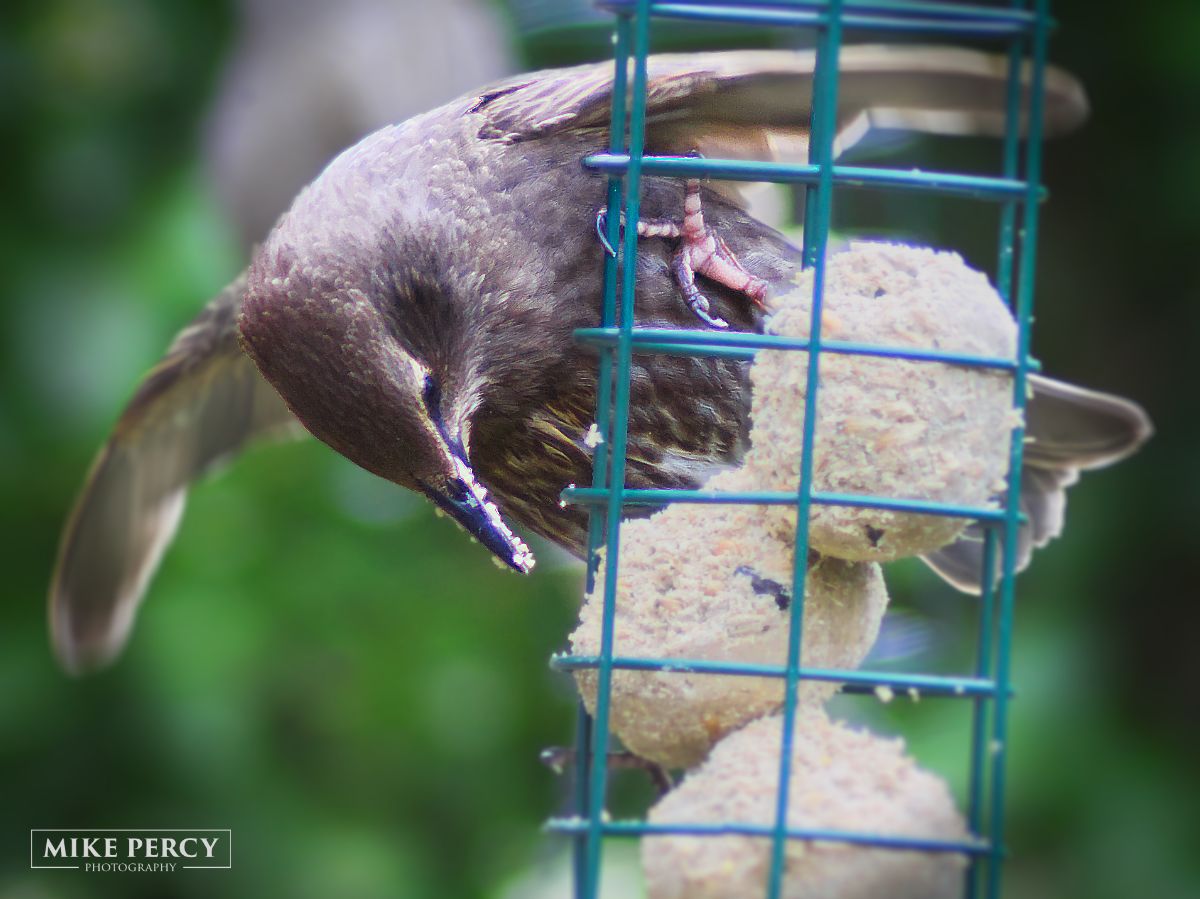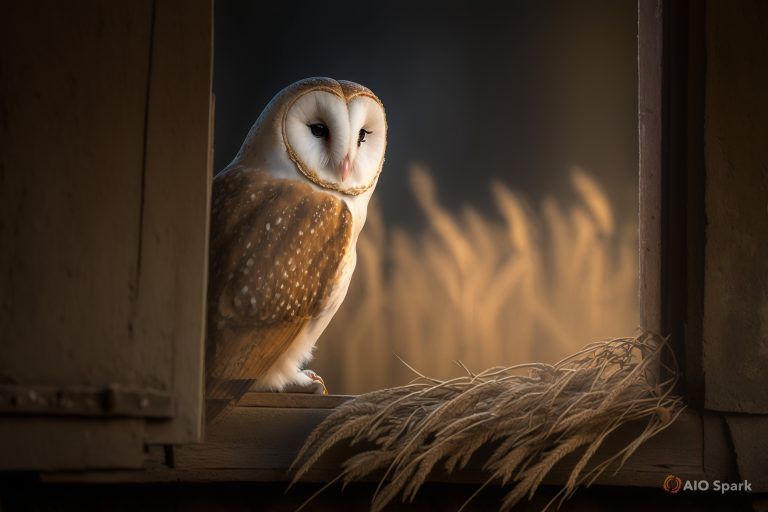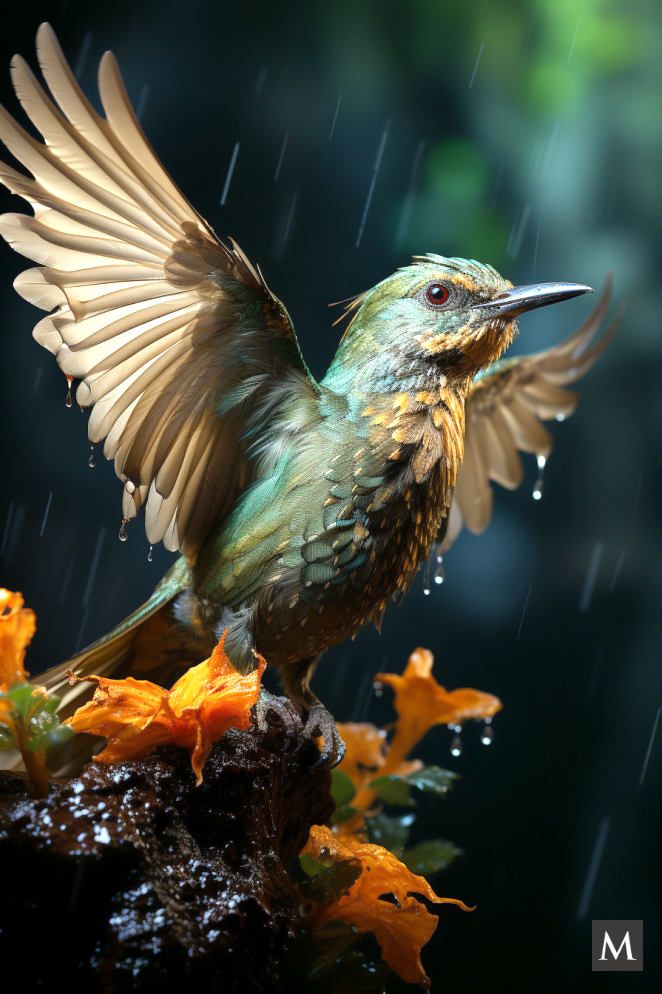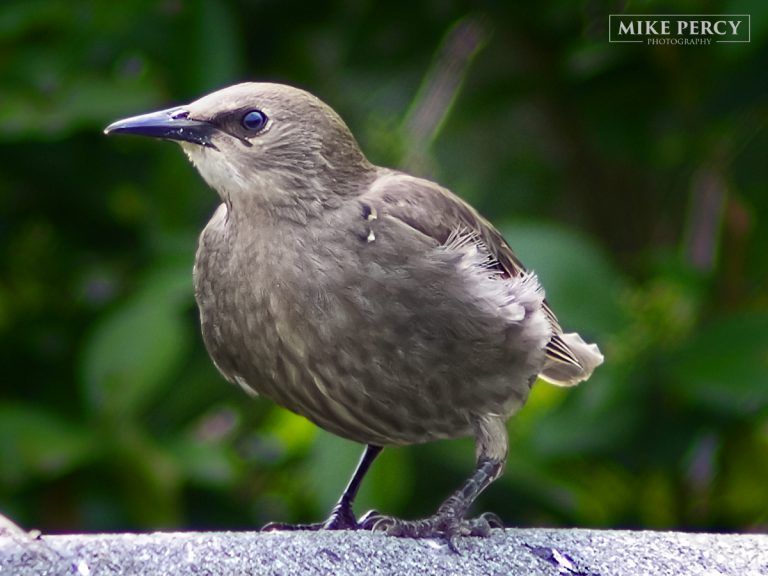Flappy-Feeding Starling
A starling flaps its wings as it grips onto the birdfeeder with its sharp talons to feed on yummy suet.
Starlings and other birds in my garden
I have a couple of suet feeders and a seed feeder in an area of my garden that’s close to two hedges and nice and sheltered, so it attracts a lot of native garden birds all year round. I have regular starling visitors, most notably in the Summer when the juveniles are very hungry, but they drop by through the winter as well.
There are a few different families of sparrows that live here all year round and a family of robins, too.
With different types of feeders I can give every species a bit of food without worrying that the starlings will eat it all. Starlings tend to go for the suet and stay away from the seeds (too much effort to eat), whereas the others will eat the suet if it’s available but will happily eat the seeds instead.
Why starlings like bridfeeders
The birdfeeder is the perfect place for starlings to find food, but it’s also a great place for them to find a mate or a place to build their nest. With the right materials and a little help, starlings can build their own birdfeeders.
Starling couples choose the best location for their nest, like a high tree branch or an electrical wire. Then the female starts to build the inside of the nest with small pieces of straw, grass, and even pieces of fabric. She often chooses materials that have bright colors, like red, yellow or green. After the inside of the nest is finished, the couple will start to collect materials for the outside of the nest as well. You can often see starling nests covered with pebbles, small stones, or even small pieces of glass.
Make a birdfeeder
The best materials to use are things that are readily available and won’t cost too much to acquire. Once you have your materials, you can follow the steps below to build your own birdfeeder:
Materials:
- Wooden board
- Nails
- Birdseed
- Straws
- Glue
- Hot glue gun
- Clothespins or suction cups
Steps:
1. First, you need to decide what type of birdfeeder you want to make. There are several options here, including a platform feeder, a nectar feeder, or even a peanut feeder. Whichever one you choose, you’ll need some wood to make it.
2. Now, you’ll need to cut the wood to the size of the feeder you want. It’s best to make it slightly larger than the dimensions so you have enough room to work with when you’re making it.
3. After that, you can start to shape the feeder. Most of these options require a square piece of wood with holes at the top where you can put the birdseed. If you’re making a nectar feeder, you can leave the wood square with a small hole in the top where you can put the nectar.
4. Now, you’ll need to decide how you want to decorate your feeder. If you want to paint it, now’s the time to do that. If you want to use another material, like yarn or fabric, now’s the time to add it to the feeder.
Flying suet!
As it flaps its wings, the suet can be flung away from the birdfeeder, making it difficult for the starling to eat. You can use a suet feeder with a baffle to keep the suet in place and make it easier for the starling to eat.
You can also put the starling feeder as far away from your regular bird feeder as possible. This may keep the starling from coming to the regular bird feeder. You can put out a variety of bird seed to attract different types of birds. Having different types of birdseed can prevent the starling from eating all of the birdseed. You can also try putting a baffle on the birdseed feeder to keep the starling from eating the birdseed.
Suet baffle to the rescue
A baffle is a piece of metal or plastic that hangs from the birdfeeder and prevents the suet from falling to the ground. Suet baffles are easy to find in most stores that sell birdfeeders. You can also make your own suet baffle out of any material you like.
You can use suet baffles to keep your suet out of reach of squirrels. Or, if you want to attract squirrels to your birdfeeder, you can hang a suet feeder above the baffle. Suet baffles are easy to make out of any material. You can use anything from cardboard to metal sheeting. If you want your suet baffle to last longer, choose a material that will withstand the weather. Most store-bought suet baffles are made of plastic.



